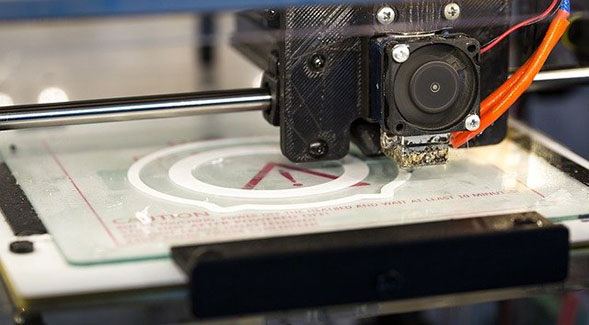Community, Learning and 3D Printing
The SDSU Library build IT makerspace continues to provide students with a resource for creativity and learning.

“Over the last decade, makerspaces have become an essential component of the academic library mission to support innovations in instruction and opportunities for community engagement.”
Creativity and innovation are two values San Diego State University holds dear, and arguably no space on campus exemplifies these more than the build IT makerspace.
Since 2015, build IT has been a student-run makerspace where students could gather to use 3D printers, sewing and embroidery machines, hand tools, and a wide variety of computers and software to create projects as diverse as they can imagine.
Over the past year, SDSU faculty and staff have introduced unique solutions to continue academic and co-curricular activities via virtual means, and the SDSU build IT community is one example of these. They came together through creative endeavor and have stayed together through creative use of technology and making.
“Over the last decade, makerspaces have become an essential component of the academic library mission to support innovations in instruction and opportunities for community engagement,” said SDSU Library Dean Scott Walter. “Makerspaces like build IT not only promote core concepts in information literacy instruction such as the role of the student as 'creator' of information, but also the development of critical thinking skills through the framework of 'critical making.'”
With COVID-19 and the closure of the library buildings, the build IT community faced a new challenge to solve: how to maintain the community and creativity outside of the space in the library and without the resources it offered.
SDSU Librarian Jenny Wong-Welch and her staff set about creating build IT Flex, echoing the SDSU Flex program where the university continued operation through primarily remote operations.
“While emerging technology is a core component of our mission, it does not represent all that we are,” said Wong-Welch. “In fact, the essence of build IT is founded on creativity and community. Both of these can still be represented in the absence of a physical gathering place and access to its emerging technology.”
Each week the build IT staff introduce three new projects that community members can participate in at home: a craft project using around-the-house materials, a simple cooking project, and a tutorial on using a new software package. Community participants use some or all of these ideas and then share their results. Ideas came from students and staff of the group and everyone has contributed.
For participants who wanted to continue working with 3D printing, Wong-Welch has been able to accept their programs and print their creations, and students pick up the finished work through Domeside Pickup, alongside the books the students need for their coursework.
The build IT student assistants were excited to be able to continue their work remotely.
“Working from home for build IT has helped me cover my financial needs during these difficult times,” said Belinda Nguyen. “It has also provided me peace of mind since I live with family who are more likely to be at risk. The time spent working from home taught me how to build a website and utilize my resources to build amazing crafts.”
Though virtual, students continue to use build IT as a resource for learning, scholarship and community engagement.
“As a student assistant working in build IT, transitioning to online work during the pandemic was smooth,” said Elise Serrano. “We've been able to continue working on our output of media content and participate in activities to foster community engagement. I've learned that everyone is working hard and doing their best to get through these difficult months.”



